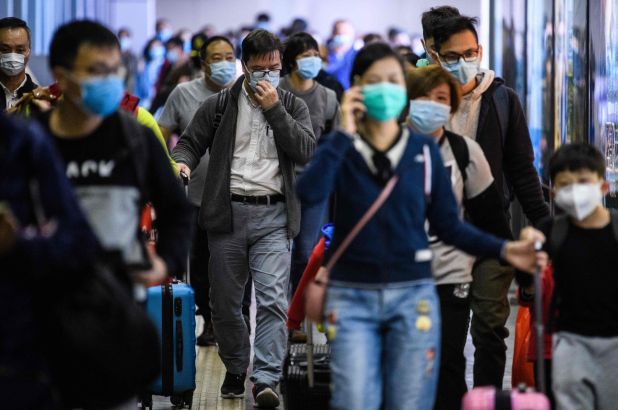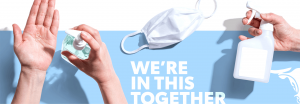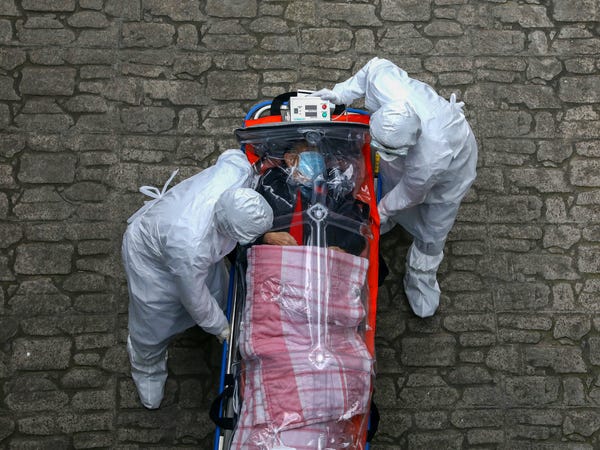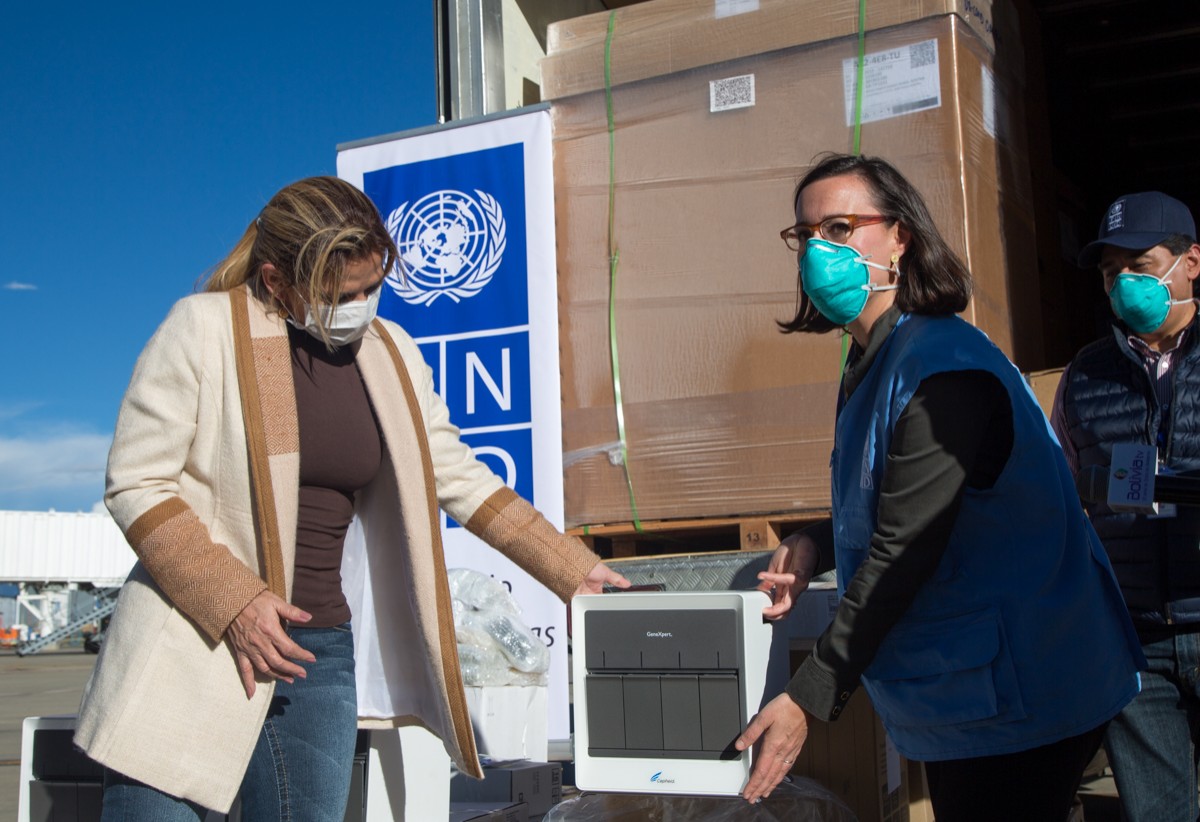
COVID-19 pandemic
The COVID-19 pandemic, also known as the coronavirus pandemic, is an ongoing pandemic of coronavirus disease 2019 (COVID‑19) caused by severe acute respiratory syndrome coronavirus 2 (SARS‑CoV‑2).[6] The outbreak was first identified in Wuhan, China, in early December 2019.[4][7] The World Health Organization declared the outbreak a Public Health Emergency of International Concern on 30 January, and a pandemic on 11 March.[8][9] As of 11 May 2020, more than 4.16 million cases of COVID-19 have been reported in over 187 countries and territories, resulting in more than 285,000 deaths. More than 1.45 million people have recovered
COVID-19 WHO
The virus is primarily spread between people during close contact,[c] most often via small droplets produced by coughing,[d] sneezing, and talking.[10][11][13] The droplets usually fall to the ground or onto surfaces rather than travelling through air over long distances.[10] Less commonly, people may become infected by touching a contaminated surface and then touching their face.[10][11] It is most contagious during the first three days after the onset of symptoms, although spread may be possible before symptoms appear, or from people who do not show symptoms.[11][10]
COVID-19 PANDEMIC & THE VIRUSNow it is All Around the GlobeShort Overview of May 2020 Situation

You can reduce your chances of being infected or spreading COVID-19 by taking some simple precautions:
Regularly and thoroughly clean your hands with an alcohol-based hand rub or wash them with soap and water. Why? Washing your hands with soap and water or using alcohol-based hand rub kills viruses that may be on your hands.
Maintain at least 1 meter (3 feet) distance between yourself and others. Why? When someone coughs, sneezes, or speaks they spray small liquid droplets from their nose or mouth which may contain the virus. If you are too close, you can breathe in the droplets, including the COVID-19 virus if the person has the disease.
Avoid going to crowded places. Why? Where people come together in crowds, you are more likely to come into close contact with someone that has COIVD-19 and it is more difficult to maintain a physical distance of 1 meter (3 feet).
Avoid touching eyes, nose, and mouth. Why? Hands touch many surfaces and can pick up viruses. Once contaminated, hands can transfer the virus to your eyes, nose, or mouth. From there, the virus can enter your body and infect you.
Make sure you, and the people around you, follow good respiratory hygiene. This means covering your mouth and nose with your bent elbow or tissue when you cough or sneeze. Then dispose of the used tissue immediately and wash your hands. Why? Droplets spread the virus. By following good respiratory hygiene, you protect the people around you from viruses such as cold, flu, and COVID-19.
Stay home and self-isolate even with minor symptoms such as cough, headache, mild fever, until you recover. Have someone bring you supplies. If you need to leave your house, wear a mask to avoid infecting others. Why? Avoiding contact with others will protect them from possible COVID-19 and other viruses.
If you have a fever, cough and difficulty breathing, seek medical attention, but call by telephone in advance if possible and follow the directions of your local health authority. Why? National and local authorities will have the most up to date information on the situation in your area. Calling in advance will allow your health care provider to quickly direct you to the right health facility. This will also protect you and help prevent the spread of viruses and other infections.
Keep up to date on the latest information from trusted sources, such as WHO or your local and national health authorities. Why? Local and national authorities are best placed to advise on what people in your area should be doing to protect themselves.
Most people who contract COVID-19 recover. For those who do not, the time between the onset of symptoms and death ranges between 6 and 41 days, typically about 14 days.[366] As of 11 May 2020, approximately 285,000[5] deaths had been attributed to COVID-19. In China, as of 5 February, about 80 per cent of deaths were recorded in those aged over 60, and 75 per cent had pre-existing health conditions including cardiovascular diseases and diabetes.[367]
The first confirmed death was in Wuhan on 9 January 2020.[368] The first death outside China occurred on 1 February in the Philippines,[369] and the first death outside Asia was in France on 14 February.[370]
Fars News Agency / Public domain


UNDP response
Every country needs to act immediately to prepare, respond, and recover. United Nations Secretary-General António Guterres has launched a US$2 billion global humanitarian response plan in the most vulnerable. Developing countries could lose at least US$220 billion in income, and the United Nations Conference on Trade and Development has called for US$2.5 trillion to support them.
Drawing on our experience with other outbreaks such as Ebola, HIV, SARS, TB and malaria, as well as our long history of working with the private and public sector, UNDP will help countries to urgently and effectively respond to COVID-19 as part of its mission to eradicate poverty, reduce inequalities and build resilience to crises and shocks.
Coronavirus disease (COVID-19) Pandemic
UN issues $6.7 billion appeal to protect millions in fragile countries
7 May 2020
An update to the UN’s Global Humanitarian Response Plan was launched today by the Executive Director of WHO’s Health Emergencies Programme, Dr Mike Ryan; UN Under-Secretary-General for Humanitarian Affairs, Mark Lowcock; President and CEO of Oxfam America, Abby Maxman; UN High Commissioner for Refugees, Filippo Grandi; and Executive Director of the World Food Programme, David Beasley.
Dr Ryan emphasized that helping the most vulnerable to confront COVID-19 is not just a moral imperative, it is in enlightened self interest: “It is not only the right thing to do, it is the smart thing to do. We won’t be safe – anywhere on this planet – until all people are safe.”
CALL FOR A VMS STAS PROJECT
Coronavirus disease (COVID-19) is an infectious disease caused by a newly discovered coronavirus. Most people infected with the COVID-19 virus will experience mild to moderate respiratory illness and recover without requiring special treatment. Older people, and those with underlying medical problems like cardiovascular disease, diabetes, chronic respiratory disease, and cancer are more likely to develop serious illness.
The best way to prevent and slow down transmission is be well informed about the COVID-19 virus, the disease it causes and how it spreads. Protect yourself and others from infection by washing your hands or using an alcohol based rub frequently and not touching your face.
The COVID-19 virus spreads primarily through droplets of saliva or discharge from the nose when an infected person coughs or sneezes, so it’s important that you also practice respiratory etiquette (for example, by coughing into a flexed elbow). At this time, there are no specific vaccines or treatments for COVID-19. However, there are many ongoing clinical trials evaluating potential treatments. WHO will continue to provide updated information as soon as clinical findings become available.
